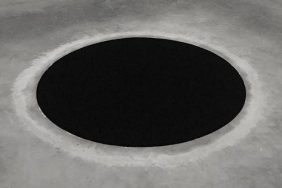The Clyfford Still Museum in downtown Denver is one of the most inclusive snd impressive collections of a single artist’s work in America – and that’s exactly the way the painter wanted it.
Located right next door to the Denver Art Museum in the city’s growing central arts district, The Clyfford Still Museum is the only official collecting and exhibiting point for Still’s lifetime of painting. The artist and his family estate insisted that only one city and one exhibit space hold his artistic inventory.

After Still’s death, Denver muscled past Washington, D.C., San Francisco, Seattle and New York to bring Still to the mountains. The artist’s estate detailed that the exhibit be dedicated to his art and its history — banning the cafe or gift shop you often find in other museums.
The museum holds 9,000 square feet of exhibit space and another 7,800 square feet of storage area to hold more than 3,000 of Still’s painting, drawings and other works. The museum’s curators are still inventorying the donated collection that’s valued around $30 million.
Also: Calling on Legends at The Art Institute of Chicago
Still was a prolific painter and draftsman, producing thousands of pieces during his career — all while teaching art at institutions across the country. A contemporary of world famous artists like Jackson Pollock and Mark Rothko, Still would call them friends until later in their careers when the three artistic egos clashed.
Highly critical of the commercial and critical art community, Still would withdraw from public life in 1961 until his death in 1980. However, he would continue his abstract painting until just prior to his passing. The museum documents every phase of Still’s work — from his early representational work to the large abstracts of his later years.

According to Los Angeles resident artist and art historian Dan Madigan, Rothko and Pollack always drew more acclaim than Still due to the romanticized nature of their deaths. However, Still’s work stands shoulder to shoulder with his more pop culture famous rivals.
“I have always felt Still’s paintings had a sense of movement — emergence as if one painting was trying to work its way through the one in front of it,” Madigan says.

“His paintings convey a sense of decay and decomposition, as if one underlying image is trying to live off the overlaying one — both existing it their own state of dissolution.”
According to Madigan, unlike the flatness of Rothko’s color fields and the erratic urgency of Pollack’s drip paintings, Still’s work has an organic sense.
“His impasto style of painting and his controlled chaotic application of pigment creates color fields that have been tilled and furrowed until the underneath bursts through as if old derelict billboards were trying to tell their history through the fragmented and tattered handbills and posters that once adorned it.”
Still’s works capture a passage of time recorded by the inherent dynamism of color. His work goes from inert to energetic within the same composition, but his style tends to be limitless — as if the frame of the painting is nothing more than a window to look out onto an endless landscape of kaleidoscopic motion and subdued atmosphere.








